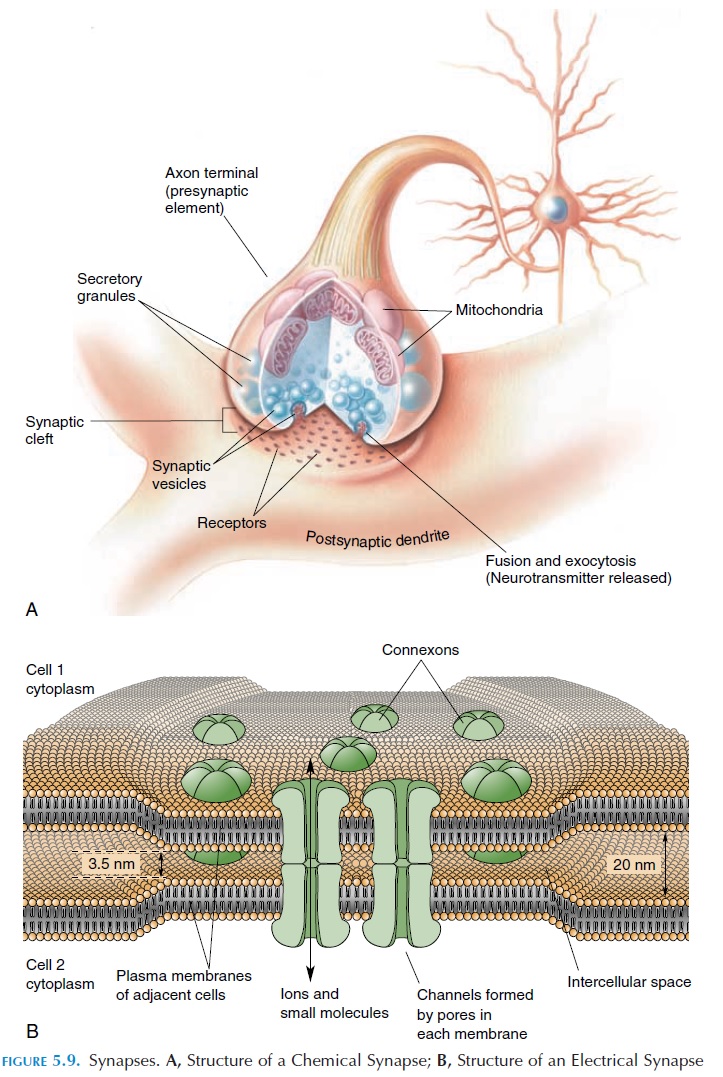Chapter: The Massage Connection ANATOMY AND PHYSIOLOGY : Nervous System
Synaptic Transmission

SYNAPTIC TRANSMISSION
For the neurotransmitters to have an effect on the postsynaptic neuron, sufficient amounts of neuro-transmitters must be released. The number of synap-tic vesicles that fuse with the cell membrane of the axon terminal, to be released into the synaptic cleft by exocytosis, depends on the frequency of action poten-tials. With greater frequency, more vesicles release the neurotransmitters contained within them. The neuro-transmitters become attached to receptors on the post-synaptic membrane that open chemical-gatedsodium channels (see Figure 5.9A). If sufficient channels open, they depolarize the neuron to reach threshold poten-tial and produce an action potential. This is an exam-ple of a stimulatory neurotransmitter. The potential changes that occur at the nerve junction are known as excitatory postsynaptic potential (EPSP).

Certain neurotransmitters become attached to re-ceptors that open chemical-gated potassium channels or chloride channels in the postsynaptic neuron. In this case, instead of depolarization, the neuron be-comes hyperpolarized (the inside becomes more neg-ative as positively charged potassium channels move out). As a result, it becomes more difficult for action potentials to be produced. Such neurotransmitters are known as inhibitory neurotransmitters. The po-tential changes that occur at the nerve junction are known asinhibitory postsynaptic potential (IPSP). From the description of stimulatory and inhibitory effects, it can be seen that the synapse is the region where there is possibility of modifying the message.
Whether a neurotransmitter is inhibitory or stimu-latory is dependent on the type of receptors they bind to in the postsynaptic membrane. For example, the neurotransmitter acetylcholine released by nerves in the neuromuscular junction causes skeletal muscle to contract. The same acetylcholine released by the nerves to cardiac muscle has an inhibitory effect.
Soon after neurotransmitters are released into the synaptic cleft, they are removed quickly from the area by enzymes, which break them up, or by reup-take back into the presynaptic neuron. Or, the neuro-transmitter diffuses into the intercellular fluid. For example, acetylcholine is broken down by the en-zyme acetylcholinesterase to acetic acid and choline. Choline enters the presynaptic neuron and is recy-cled. The neurotransmitters epinephrine and norepi-nephrine are removed in an unchanged form from the synapse by reuptake. Quick removal of neuro-transmitters is important to enable the postsynaptic neuron to respond to another stimulus again.
Related Topics